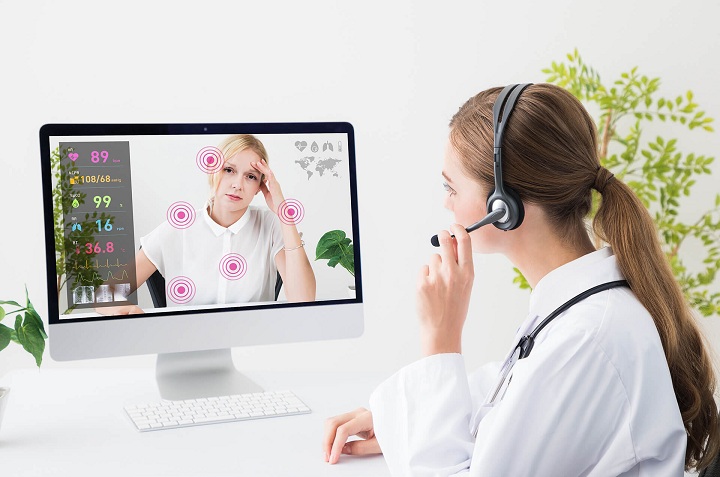Remote patient monitoring (RPM) is becoming a standard practice around the world, with significant implications in the post-COVID world of healthcare. It’s beneficial for monitoring patients during the pandemic, and growth will continue as providers and patients establish a level of comfort and see the benefits of virtual care.
The pandemic hastened adoption of the technology across the U.S. and Europe, but the underlying concept of supplementing conventional hospital-based care is the continuity factor. As COVID-19 fades and surges with different variants around the world, that use case continues as a viable option. But, COVID changed the perspective and the conversation. RPM has transitioned from a wish list item to a valuable standard offering for healthcare providers to provide optimum service to patients and research organizations. By the end of 2023, the RPM market is expected to earn more than $31.3 billion, an increase of more than 97 percent since 2017.
RPM growth outside the U.S. and Europe
COVID applications in the U.S. and other industrial countries is the obvious use case. Perhaps less obvious is the idea that growth might actually happen more in developing countries. Despite all the talk in the U.S. and certain other developed nations, the more urgent adoption and implementation is happening in less industrial countries. More developed countries have alternatives whereas in areas where conventional healthcare systems aren’t as well structured, they were more desperate and went straight to wearables. Here’s an analogy. When a lot of the world had little telephony access, some regions skipped landlines to go straight to wireless as a communication structure, whereas developed nations progressed through using landlines before mobile emerged as the dominant technology. The same type of technical progression is happening with RPM technology in healthcare. RPM is leapfrogging some of the previously standard methods to become the option of both necessity and choice.
As an example, in Vietnam, healthcare providers are using RPM technology to skip some more traditional means of monitoring to take on the COVID challenge in Ho Chi Minh City. iParamed, a digital healthcare solutions company, is working with the Oxford University Clinical Research Unit to use RPM devices to monitor data from 500 patients and 30 ICU beds at a Vietnamese hospital and send it to a central location. Doctors and nurses don’t need to stay in the hospital rooms to have access to critical data. The technology is working to help COVID patients now but has the potential to expand to other patients with both chronic and acute conditions even as people are often making the choice to avoid traditional healthcare facilities.
Challenges and benefits of implementation
A big push from a government mandate or major crisis can help get RPM technology past the initial implementation hurdles, but there are still other issues standing in the way of more mainstream use – financial, political, and more. These could be as straightforward as reluctance to move on from entrenched systems. Provider teams can be skeptical, especially concerning the impact on existing jobs. Administrators can be wary of the need for additional technical infrastructure and support in addition to the cost of the actual devices.
The positives aren’t overly complex on the surface. It’s easy to relate to the idea of better care for patients and more accessibility. Those are clear benefits. At the most basic level, a higher level of care can be available to a broader population. But, more advanced care can skew toward the population that can pay for it. Mobile cardiac telemetry (MCT) and heart disease is one example. There’s a specific reimbursement code for that use of RPM, making it easier for healthcare systems to implement. That’s one way vertical examples of RPM focused on specific diseases is emerging. But, as we move past 2021 and the success of COVID applications, there are more horizontal, generic levels of RPM application. These usually have more to do with fundamental vitals monitoring. Some applications will be accessible and widely distributed while others will be based on specific diseases.
Bottom line implications
Broader implementation of RPM technology can help alleviate some of the backlog providers face post-COVID. Healthcare systems need to see patients to keep revenue flowing and, in the real world, the bottom line is a dominant factor. In a private hospital, strategic implementation of RPM technology can provide an alternative care method to keep a revenue stream with patients who aren’t comfortable coming in to a facility to engage with doctors. For government-based or non-profit hospitals, RPM technology can help deliver care to a larger portion of the population than traditional delivery methods.
It’s critical to be clear that RPM doesn’t replace clinical technicians, but the technology can supplement staff resources and labor. Like any investment, there’s an initial cost of new infrastructure and training but the devices aren’t overly expensive. Once the preliminary expense is incurred, the cost of labor is reduced as the ability to serve a broader population increases potential patient reach. In the long run, costs are reduced while care is improved. By monitoring even basic vitals, it’s possible to pursue pre-emptive care rather than focusing on more serious outcomes.
RPM offers viable benefits to healthcare systems around the world to benefit both patients and providers both during COVID and post-pandemic to facilitate better outcomes across the spectrum of care.




















